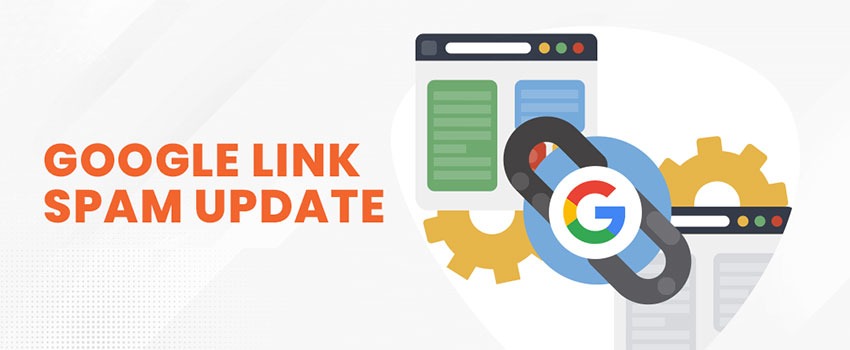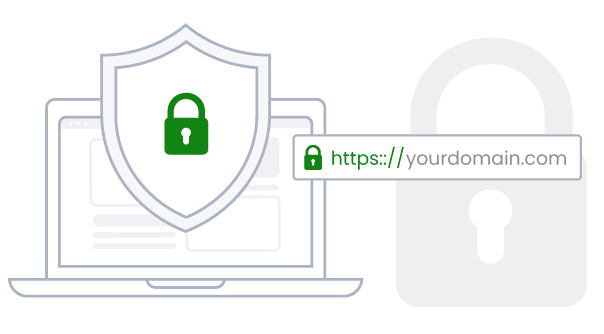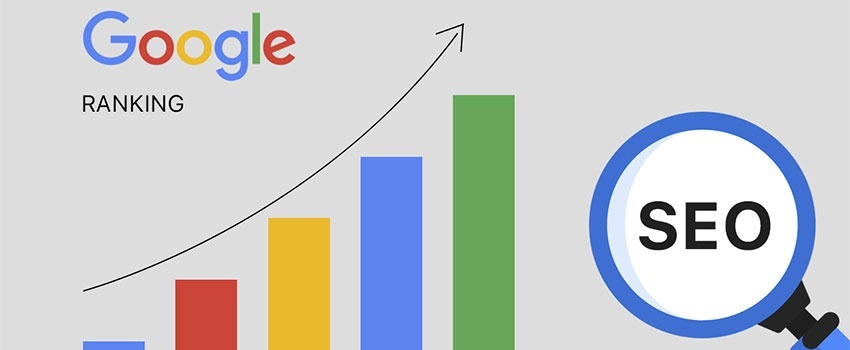Best Link Building Techniques Recommended For Higher Ranking in Google
Search engine optimization has changed a lot in the past few years particularly in respect of a dwindling importance of keyword based titles and description. Things that used to work great in the past do not work anymore. Lots of changes have been implemented by Google causing to a devaluation of some of the websites that had very high ranks before. Techniques that delivered great results in the past will now get your website penalized today.
Also read:
Google Exact Match Keyword Penalty Explained
SEO Facts Revealed on Google Webmaster Central
Harnessing the Power of Social Media Marketing in Business Growth
In this article, we will talk about outdated SEO techniques and why you should avoid them. We will also discuss the better alternatives to these outdated techniques.
Let’s get straight away to look at some of the outdated techniques:
- Over-optimized anchor texts in your internal links. Internal links are links from one page of your website to other pages of your own website. Anchor-texts are the clickable words that are used for the link. Internal links have a lot of benefits both to users and search engines.. They define the hierarchy of your website and they help your website visitors and search engines to find what they are looking for. Internal links can help significant reduction in website bounce rates and for search engines, it helps them find new pages on your website and for them to understand the structure of your website.
In the past, it was possible to increase the relevance of a website by using the keywords for which they want to get high rankings over and over again in their internal links. The idea was that a web page must be very relevant to a keyword if many other pages of the website link to that page with that keyword. It worked then but not now any longer.
This might have worked in the past, but it does not work anymore. Google and other search engines will get suspicious if you over-use particular keyword-rich links on your website. Over-optimizing the internal links on your website will raise a red flag. If your internal links look spammy and manipulative, search engines might go as far as penalizing your website.
Also read:
Key SEO Mistakes That Will Kill Your Ranking Gains
The Power of Segmentation and Personalization in Email Marketing
How Small Businesses Can Compete and Win Against Big Businesses on the Web
The Alternatives
You will make sure that you use your internal links are done correctly. Here are some things that you should consider when you create the navigation of your website: It is correct that good website navigation is very important because it helps website visitors and search engines to understand your website structure.
Also read:
Enhance your search engine performance in simple steps
- Internal links should be distinct, simple, consistent and familiar. The navigation should be separated from the main content of your website. It should be easy to find and it should not use unusual types of navigation. If your website visitors have to think about how to find a page, you will lose them. You should use the same navigation model on all pages.
- It should be clear and descriptive. Use simple and obvious terms that are easy to understand. Use descriptive captions and avoid generic captions such as ‘Products’ or ‘Services’. You can and should use keywords that are related to your business in the captions as long as they make sense.
- Internal links should be concise, ordered and structured. Remove less important elements to make the remaining element more profound. Put the most important items first in your navigation,. Find the best way to organize the content of your website and reflect that in the structure of your website navigation.
- Don’t make your information obscure. All pages on your website should be available with a maximum of four clicks from any other page of your site. A good method to achieve that goal is to limit the categories on your website. The fewer the categories, the better. Three level categories had been very good for navigation purposes.
- Focus on an easy-to-use and logical website navigation. You can use keywords in your internal links as long as the links make sense and are easy-to-understand. Do not try to manipulate the links. Natural links that make sense for human website visitors work best.
Links have become one of the most important factor in Google’s ranking algorithms. That’s why so many people tried to manipulate the links that point to their websites and struggle to get as much links as possible.
Manipulative link building used to work until Google found out how to detect manipulated links. Websites that used these links are now at the risk of a penalty and they also loose their rankings. Building links the wrong way can still work for some keywords, but it is very risky. Additionally, the results do not last.
In general, Google’s latest ranking algorithms simply ignore spam links. If your website has very many of these spam links, your website still can get a manual penalty. For that reason, you should avoid these outdated link building techniques:
- Blog comment spam.
- Forum spam and forum signature spam.
- Paid links that do not use the rel=nofollow attribute (for example site-wide footer links).
- Private blog networks (a network of small websites that are just used for link building).
- Link directories that link to all kind of websites.
- Unrelated article directories and low quality guest-posts.
All of these methods seem easy and have actually become easier ways to get links pointing to your website. Unfortunately, all of them are risky and they can have a negative influence on your search engine rankings.
The better alternative to the above link building methods will include
- First of all, you should remove all unnatural links that point to your website. The Link Disinfection tool can help you to do that:
Just enter the URL of your website and a Link Disinfection tool will show you the links that you should remove. Contact the site owners and ask them to remove the link. If that is not possible, the Link Disinfection tool will create a ‘Disavow links’ file for you that you can send to Google.
After removing the bad links, you can start to build better links that point to your site going by the advice below.
- Keep track of your link building activities, check if a website still links to your site, evaluate potential link partners, contact other websites.
- Find websites that link to several of your competitors, these sites are likely to link to your site, too.
- Take advantage of Link Opportunity finder – quickly find websites that are related to a particular topic and likely to link to your site.
- Starter backlinks: submit your website to authority sites in your category.
- Local hubs: make sure that your website is listed in all relevant local directories.
Link building is not difficult if you follow some basic rules:
- Links that are created automatically in bulk are bad.
- The easier it is to get a link, the less influence it has on the rankings of the linked page.
- Links that are good for human visitors are also good for search engines.
Summary of Acceptable and Unacceptable Link Building Techniques
Take content building seriously.. People will link to your website if it publishes quality content. After creating good content, try to reach out to key influencers.
Focus on these key elements when developing content
- Provides clarity and details on an emerging issue.
- Analyze and summarize a complex topic.
- Stir debate with a controversial opinion.
- Create a hook/angle that you will use to pitch to influencers.
- Find potential key influencer targets.
- Prioritize your key influencer target list.
- Take Social media influence more seriously
- Contact your targets and pitch your content to them
- Establish that you are real (not a spammer)
- Inform them why they should be interested in your content.
- Provide a call to action (tell them what you want them to do)
- Keep it short and simple.
Good link building strategy to develop high value links.
You will find that the more difficult it is to get links, the greater value Google attaches to the link. In building links, keep an eye on link building opportunities by analyzing the link profiles of competitors.
Take these steps seriously:
- Compile a list of competitors.
- Create backlink profile for each competitor. You should use one or more of the following tools:
Open Site Explorer
Ahrefs
Bing Link Explorer
Raven Tools
MajesticSEO
CognitiveSEO
- Analyze the backlink profile of each competitor. Using your chosen tool, compile the following metrics:
Total number of links
Number of linking root domains
New/Fresh Links
Categories of Links
- Discover opportunities. When you manually go through the link profiles of your competitors (and compare to your own) you are looking to discover link building opportunities. This process is as much art as it is science – and it will vary widely based on your niche. In general, you should be looking for:
High domain/page authority links
Links that several of your competitors share (but you don’t have)
Links from related sites (e.g., have a related keyword in their URL).
Which of their content pages have a lot of links (this can give you insight into what types of content is drawing interest)
Read more:
10 Analytical Tools For Link Building
A Search Engine Friendly Guide to Link Building
Broken Link Building
Locate broken links. There are many ways to identify broken links. Scrapebox (www.scrapebox.com) can help you to check large volumes of links. Free tools are available, where you can just enter the URL of the target page (from step 2 c) and identify broken links.
Reach out to webmaster/content owner. Identify out of date/broken links and recommend replacements. May help to recommend some links that aren’t to your own site.
Verify Link is Broken
Summary of Link Building Strategies Not Recommended
Paid Links: Never buy links. What is implied here is paying a website or service to have your links appear. This is bad because Google’s frowns at it, considers it to be a manipulative approach.
Article Marketing/Article Spinning/ Article Directories.
This involves creating low quality articles with spammy links and attempting to have them published as often as possible (in low quality sites/directories. This is considered by Google as spammy links and can lead to a penalty.
Profile Links. This involves creating accounts on hundreds of forums solely for the purpose of adding your link. Google also rejects this practice and has found it easy to detect. You need to avoid this approach for link building.
Web Directories: These are low quality directories that display thousands of links in hundreds of different categories. Google sees this as spammy.
Overuse of Reciprocal Links. This is when you create 100s of links to other sites in exchange for a link back. These ind of links have little or no value and should be avoided.
High quantity/low quality Blog/Forum commenting: Generally blog and forum commenting are easy ways to get backlinkks but should be avoided. Google particularly frown at using software/services to leave generic comments on thousands of websites, usually with spammy anchor text links.
Anchor Text Spam Links – Using your “keywords” (versus naturally generated anchor text) in your link profile. Google Penguin updates targeted this practice and can lead to a penalty.
Link Networks/ Link Wheels – This is a Network of sites that link back and forth to inflate page rank. You need to avoid this because Google is actively searching link networks out and shutting them down. Not just that but their users are also penalized.
Read more:
Link Building Strategies That Boost Search Engine Ranking
Popular SEO Tactics That Have Become Obsolete
Summary
Quality backlinks is a well known sign of endorsement and do help build website rankings. However, the rule is that they must be conducted within ethical framework acceptable to Google. They must be natura, add value to your content, and be useful to the website user.










